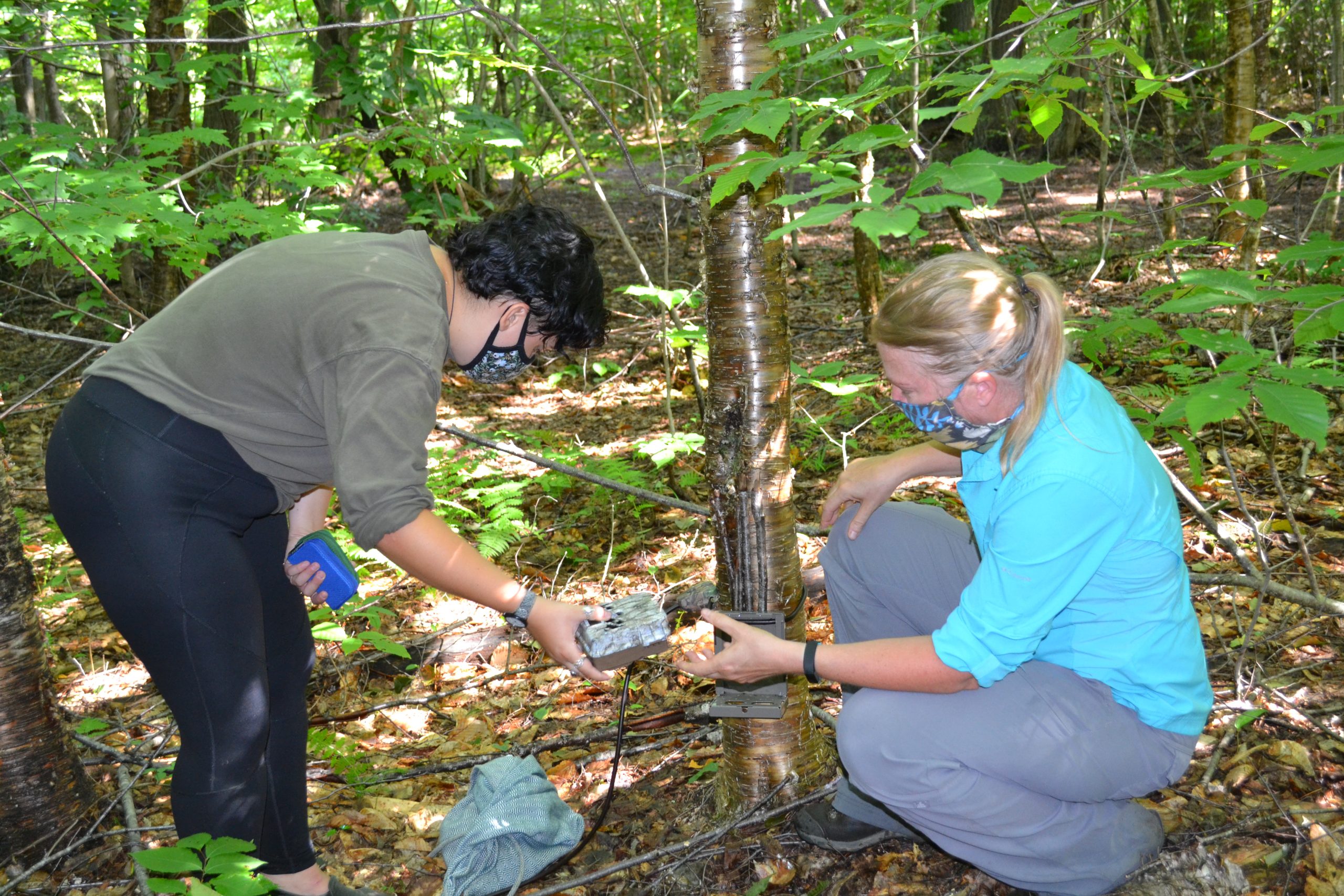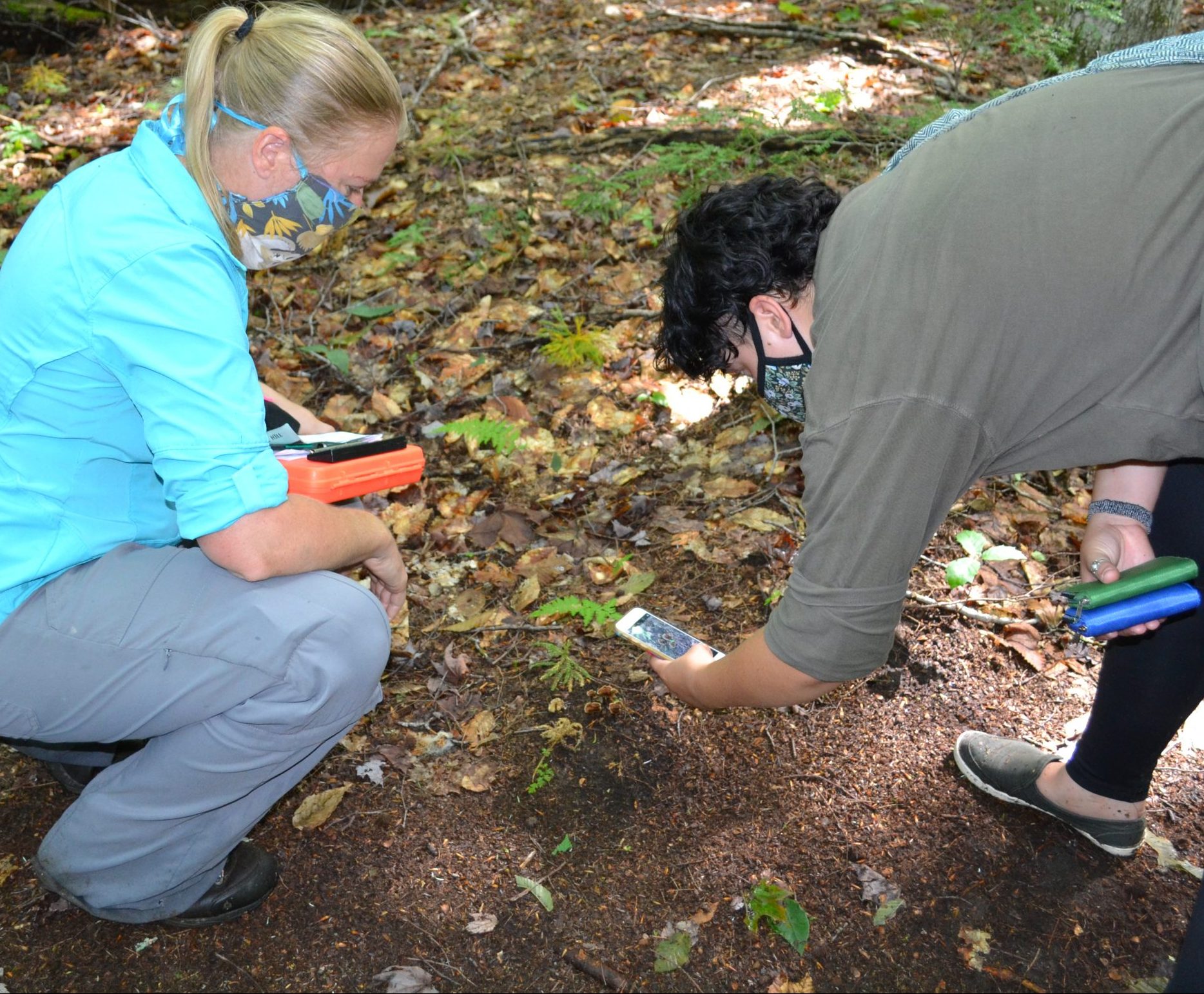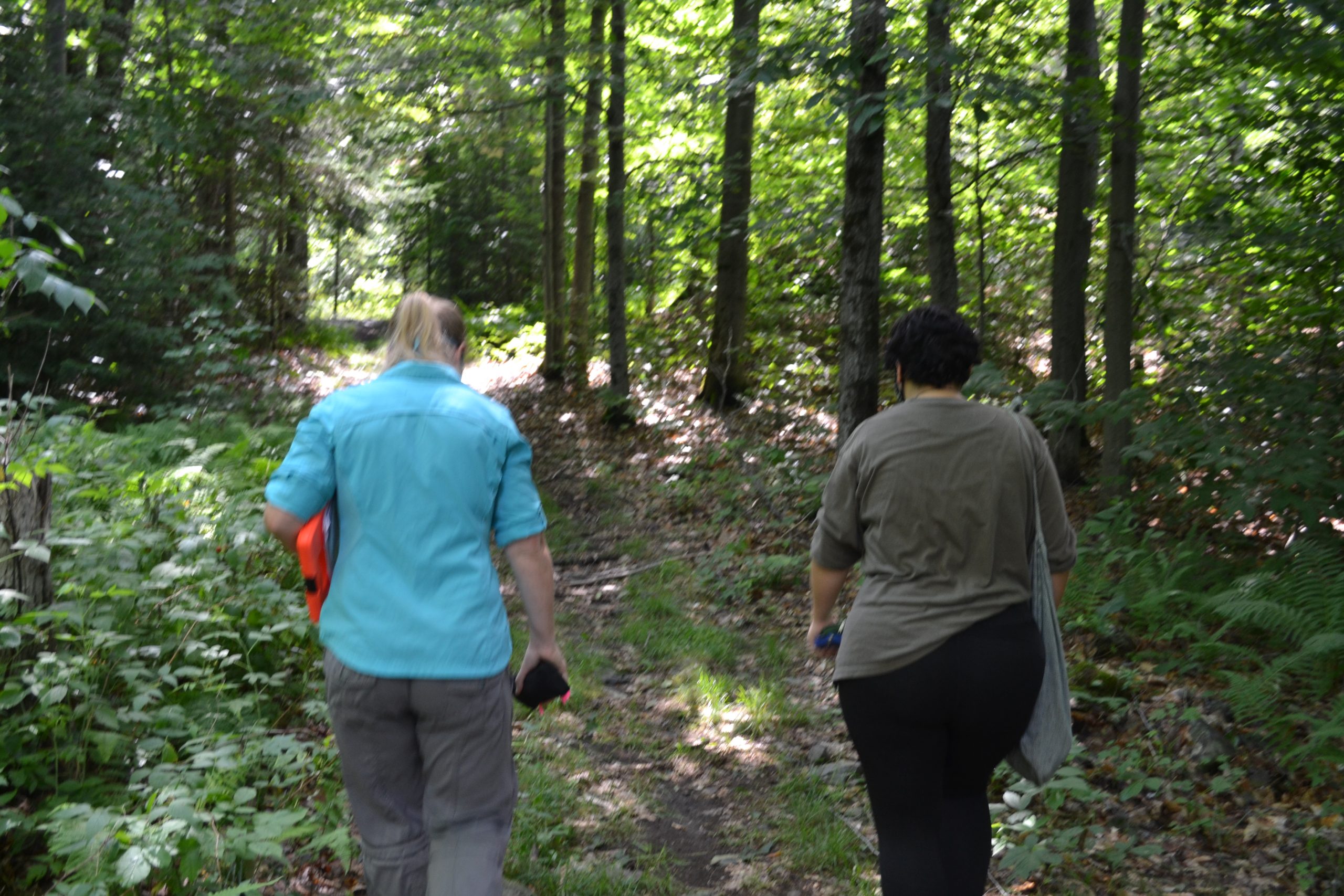
By Hannah Binder
FARMINGTON – A wildlife biologist for 20 years, Professor Donelle Schwalm and University of Maine at Farmington student and research assistant, Jen Larson, have been observing wildlife found in Flint Woods and Bonny Woods for a few weeks now.
Every week or two, the pair head out to the woods to collect data from cameras that they’ve placed in several locations in an attempt to document a wide range of species found there. The camera locations vary in elevation and water access but are generally set back from heavily trafficked trails in the interest of making the many hikers of the area feel comfortable. The aim of the study is to identify how the wildlife community is changing as well as how local uses of forests might be affecting it.
“This is just a study,” Schwalm said. “Really, the goal is just to provide a benchmark of diversity at this current time. And then after several years, we’ll analyze the data for any trends in diversity or overall detection rates. And, who knows? Maybe it could be used to inform the local forestry practice.”
Right now, they have cameras posted in the local woods as well as Temple, and a few other privately-owned and town-owned properties around Farmington.
“Flint Woods is an obvious place to start because it’s so close to town, they’ve always been supportive of us coming out. But I think in the long term, I’m kind of interested in looking at what the wildlife community around Farmington looks like, and monitoring it for change and in the future, climate change, things like that,” Schwalm said.
Ideally, eventually there would be cameras all over the state of Maine to provide a statewide representation of the species thriving and, potentially, in danger here.
Helping Schwalm with this study, Larson has learned skills like “independent decision-making,” as well as technical skills, species identifications, learning where best to place cameras for observations, and even identifying bird calls. Larson performs much of the work in the field, learning as much as she can while studying something that she’s passionate about.
“It’s a nice break from the classroom,” says Schwalm as she records the data Larson dictates to her from the camera’s memory cards. “It gives you a chance to go out into the field and really put to use what you learned.”
And every moment is seized as a teaching moment.

While the main goal of the study is to track the species living in the most immediate wildlife community, that doesn’t stop Schwalm from broadening the learning experience. Along the roughly 2-mile hike to check all the cameras, Larson identifies a squirrel calling from a nearby tree and Schwalm immediately asks her, “Yes, what kind of squirrel?” The two identify various mushrooms and work amiably and respectfully together, more like colleagues than professor and student, as they observe Farmington’s backyard. Schwalm is interested in making students responsible, while passing on the knowledge she’s accrued working nation-wide studying species. Larson hopes that the skills she learns in this position will help her in the future to become a park ranger.

It may seem monotonous, simply reading numbers off a camera’s memory card and recording data, only to be used at a much later date, or even discouraging when you encounter a camera smashed by a hiker. But enthusiasm and joy for the work is clearly not lacking as Larson delicately plucks an inchworm from one of the camera’s casings so as not to injure “the little traveler.”




